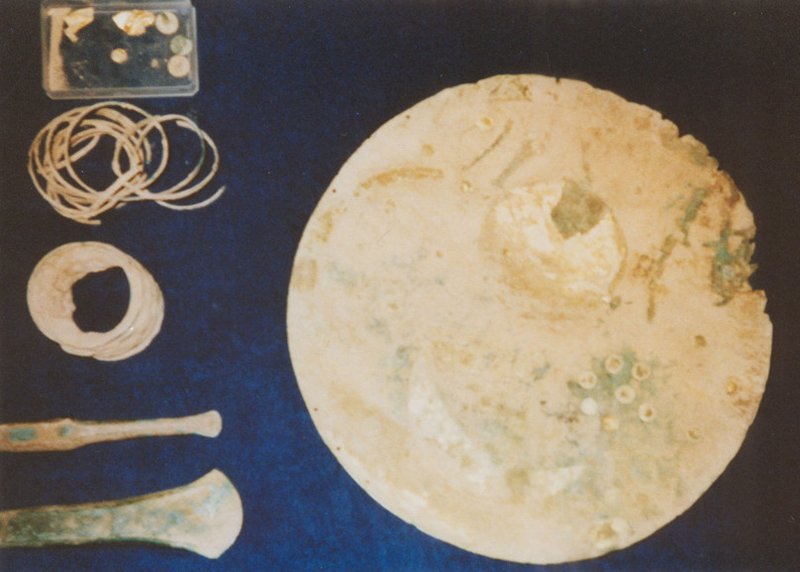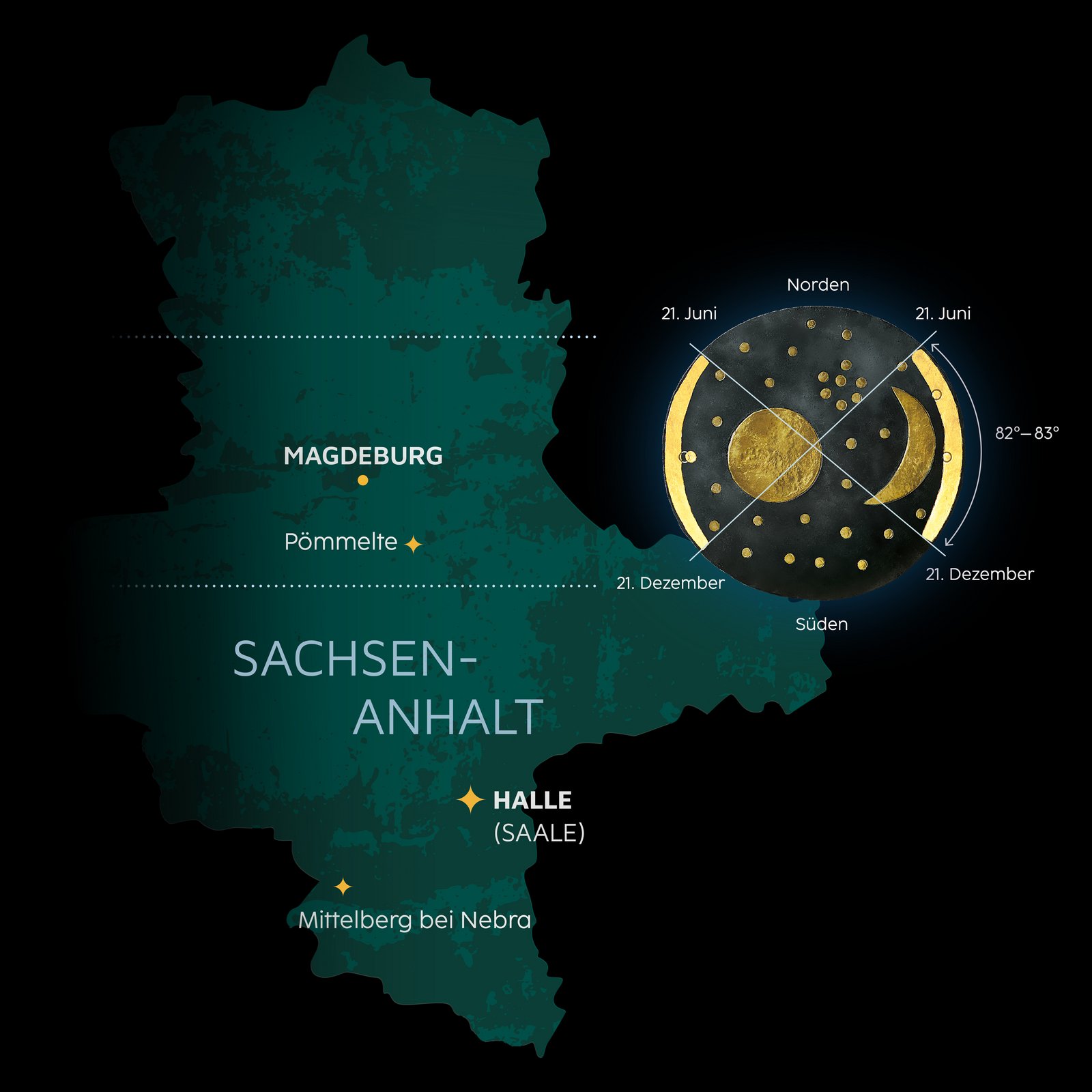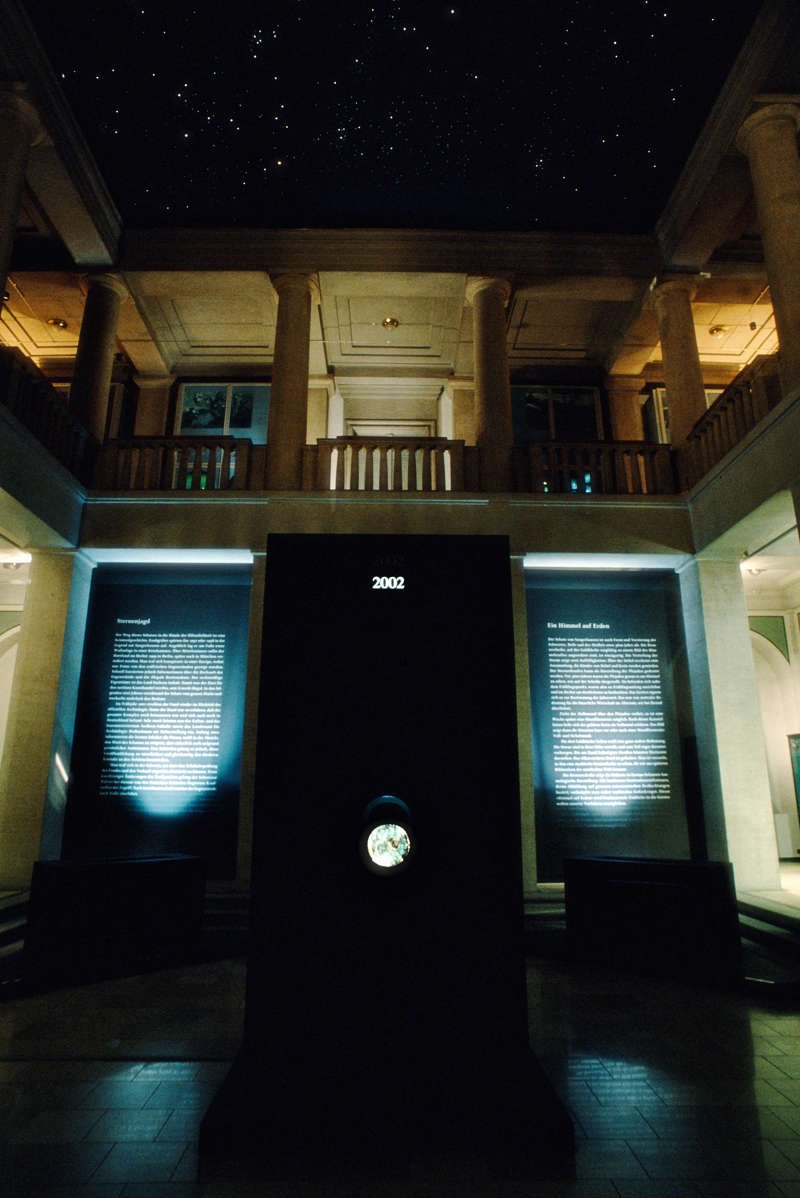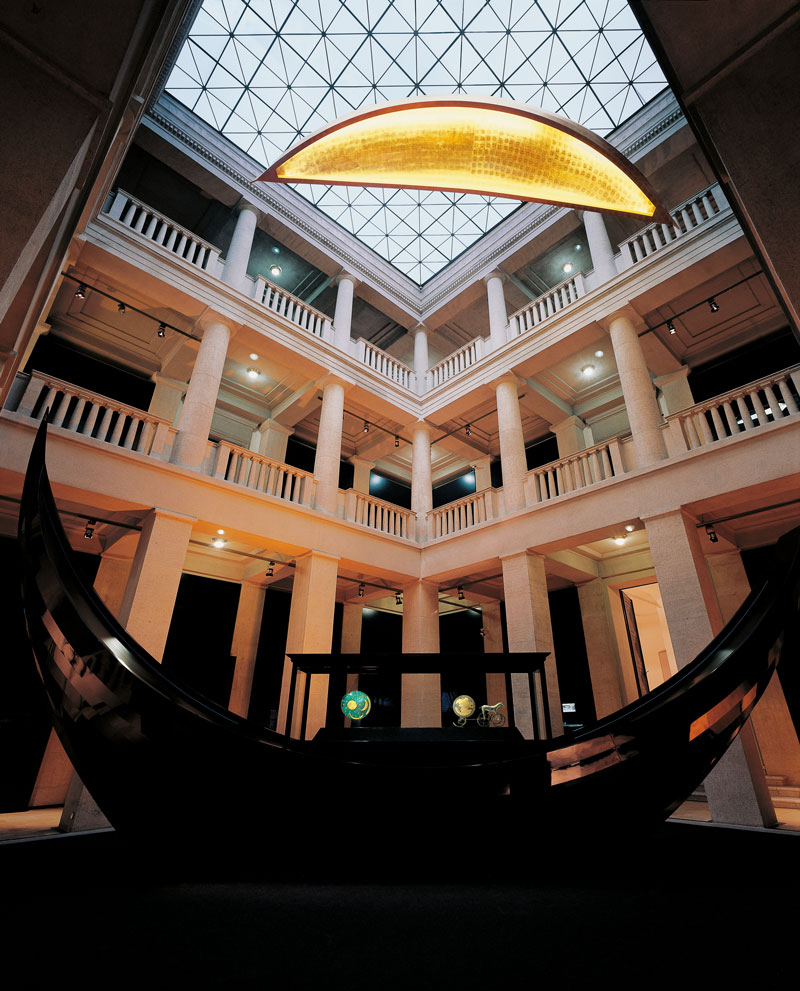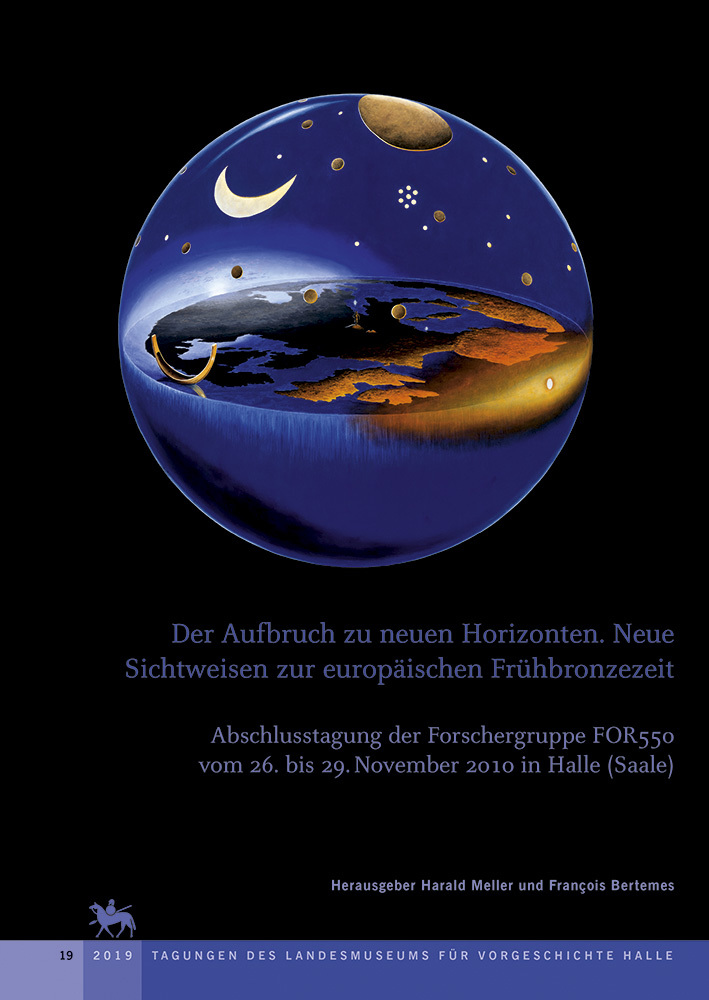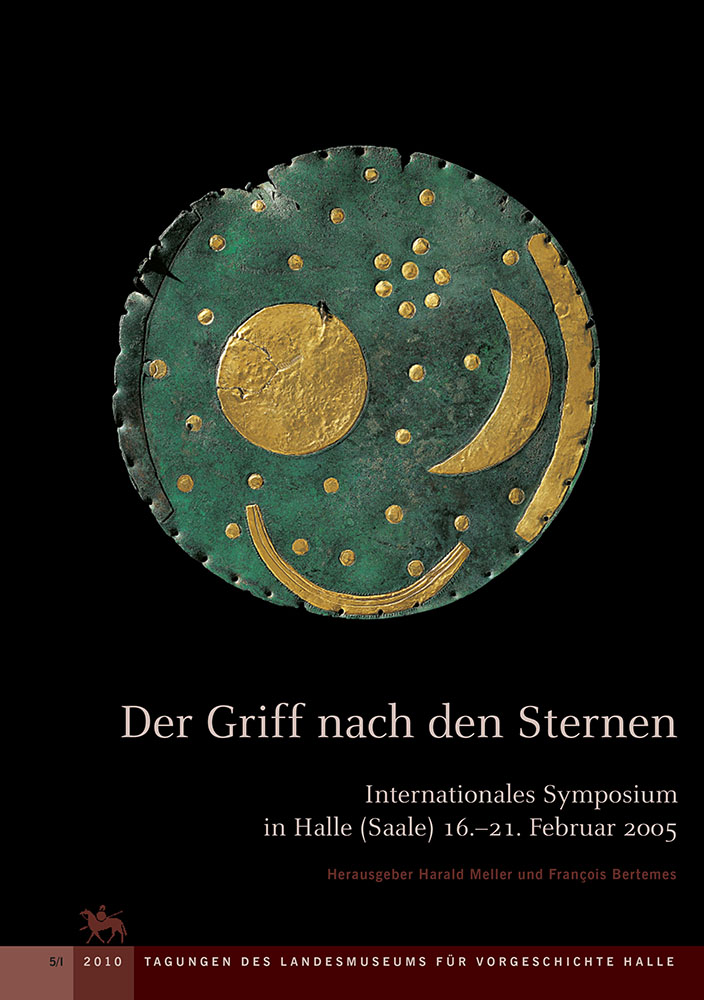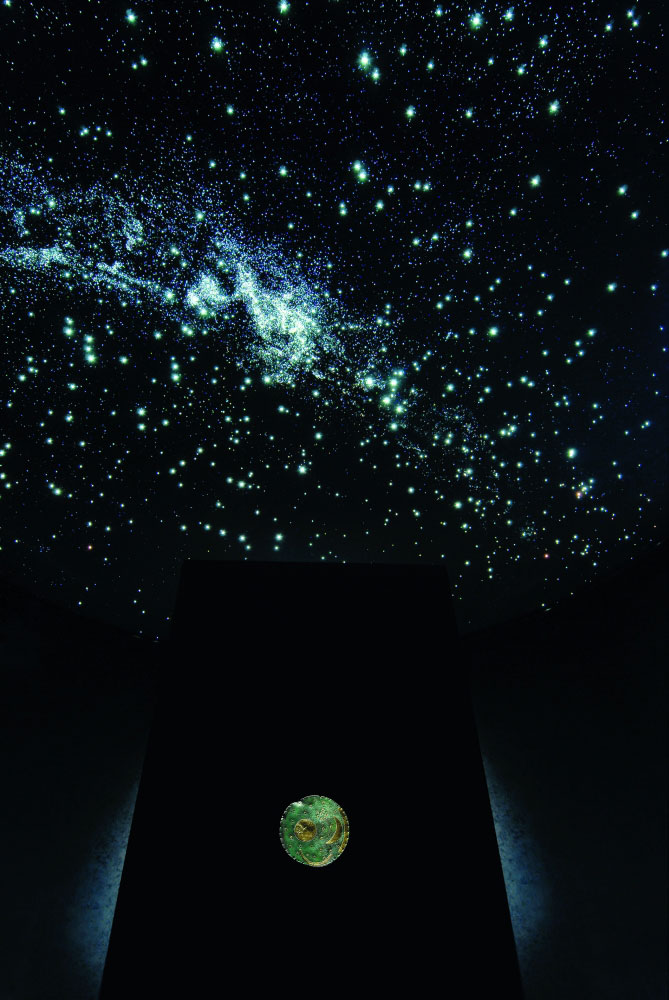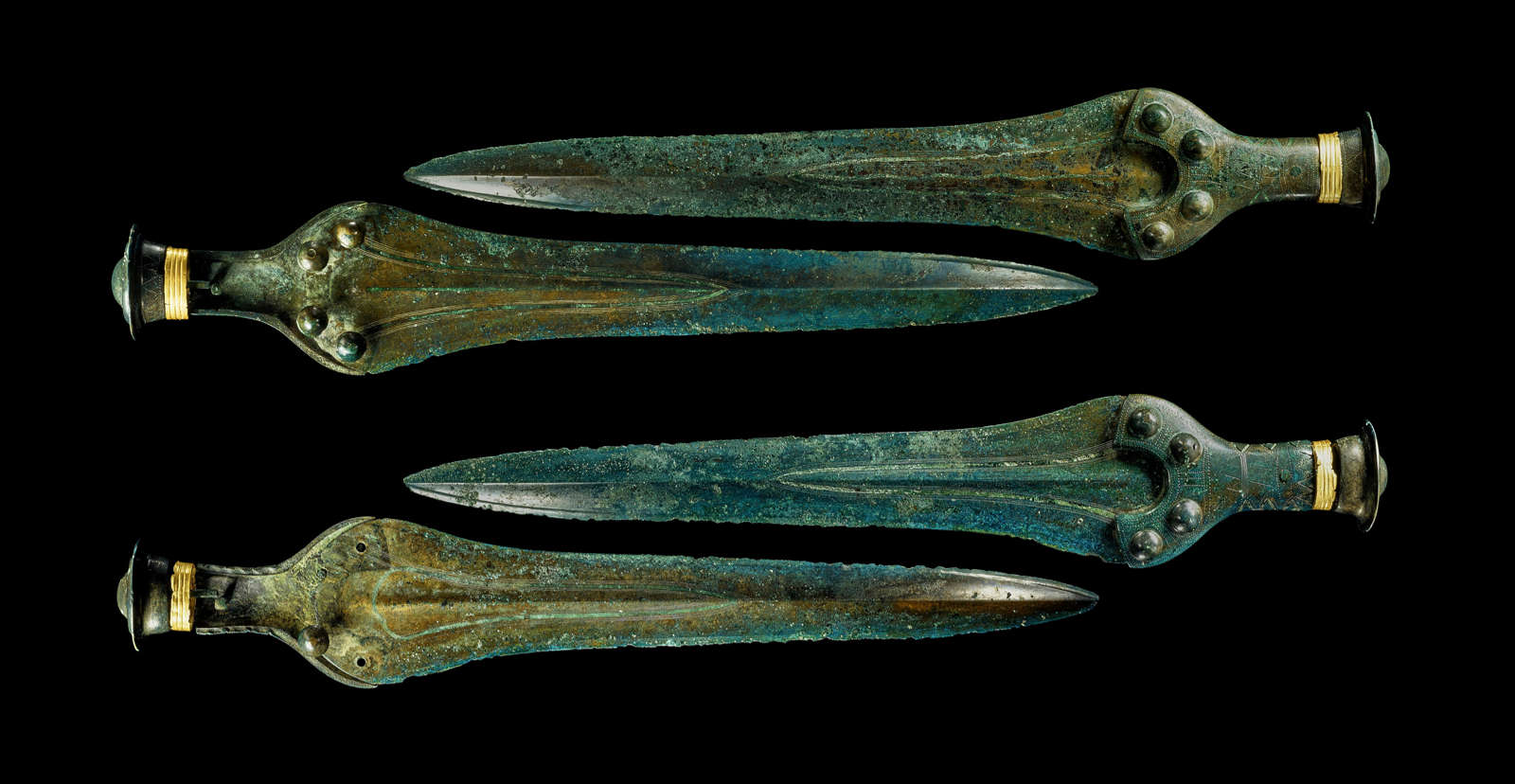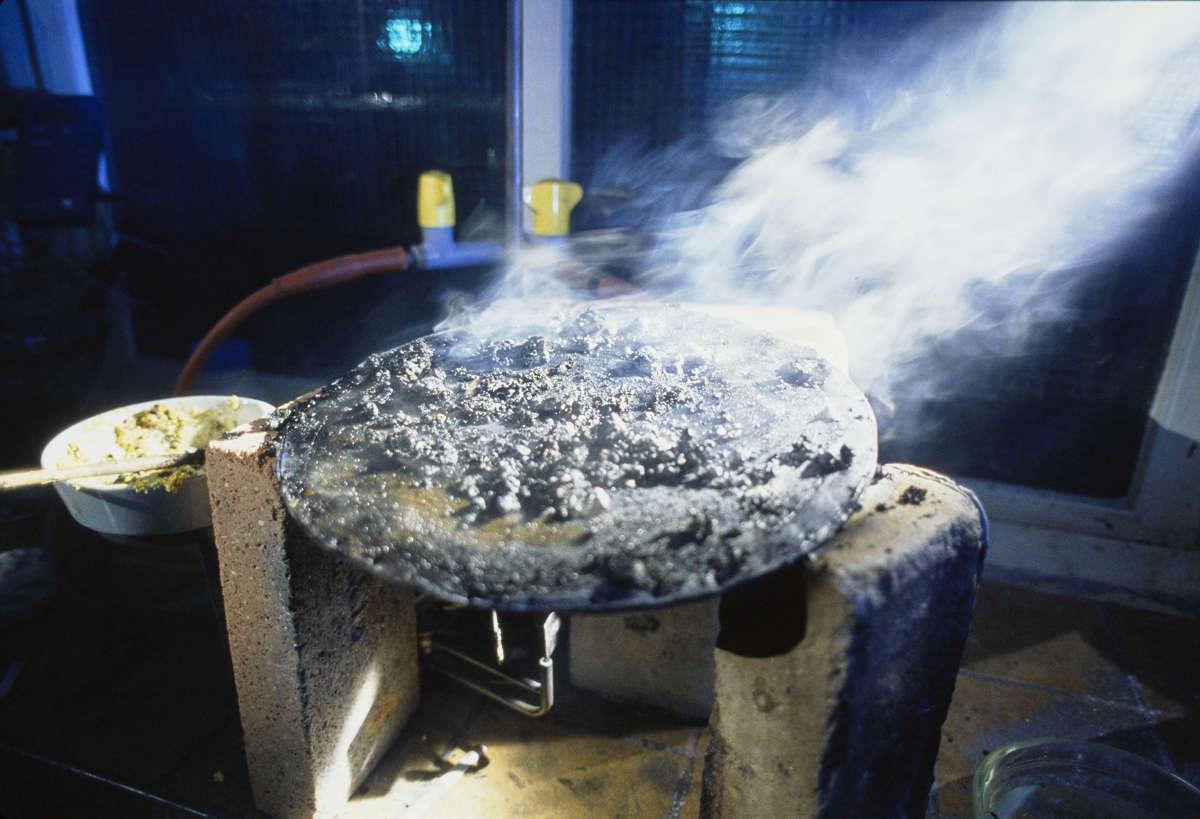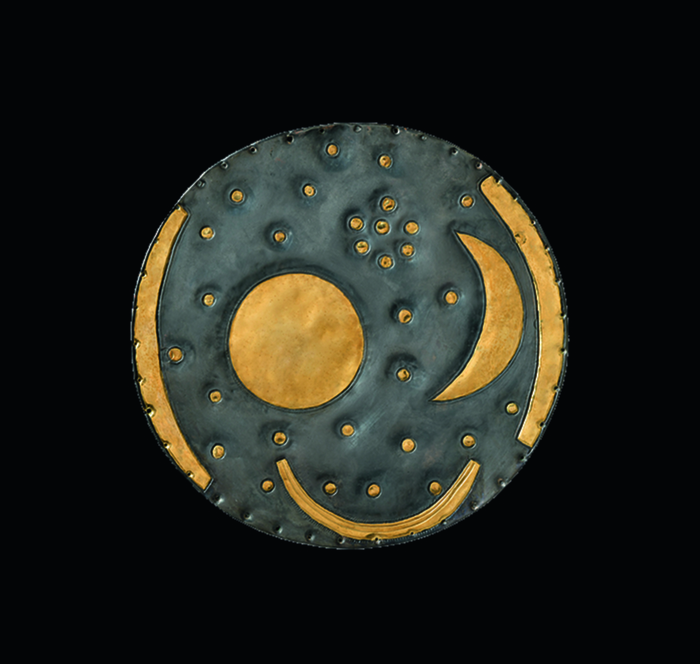Research history
On the basis of a photograph of the complete find, the Sky Disc is dated to around 1600 BC based on the swords and tools. The time of discovery, location and whereabouts of the objects are unknown.
The gold appliqués are interpreted as an image of the night sky with the Pleiades, moon and/or sun, horizon arcs, and a sky ship.
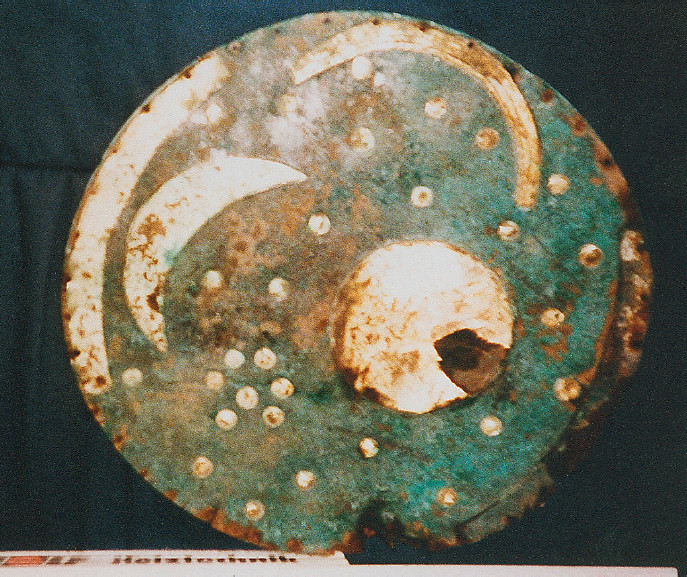
A picture from the time of the reselling attempts. The disc has already been improperly cleaned. © LDA.
Two different grades of gold have been used: one for the solar barge, another for stars and horizon arcs.
The idea arises that an encoded leap rule is depicted. A possible reference to the Near East is discussed.
Further analyses reveal: Three different grades of gold have been used: one for the celestial bodies, one for the horizon arcs, and one for the barge.
The 5 phases of the Sky Disc are identified.
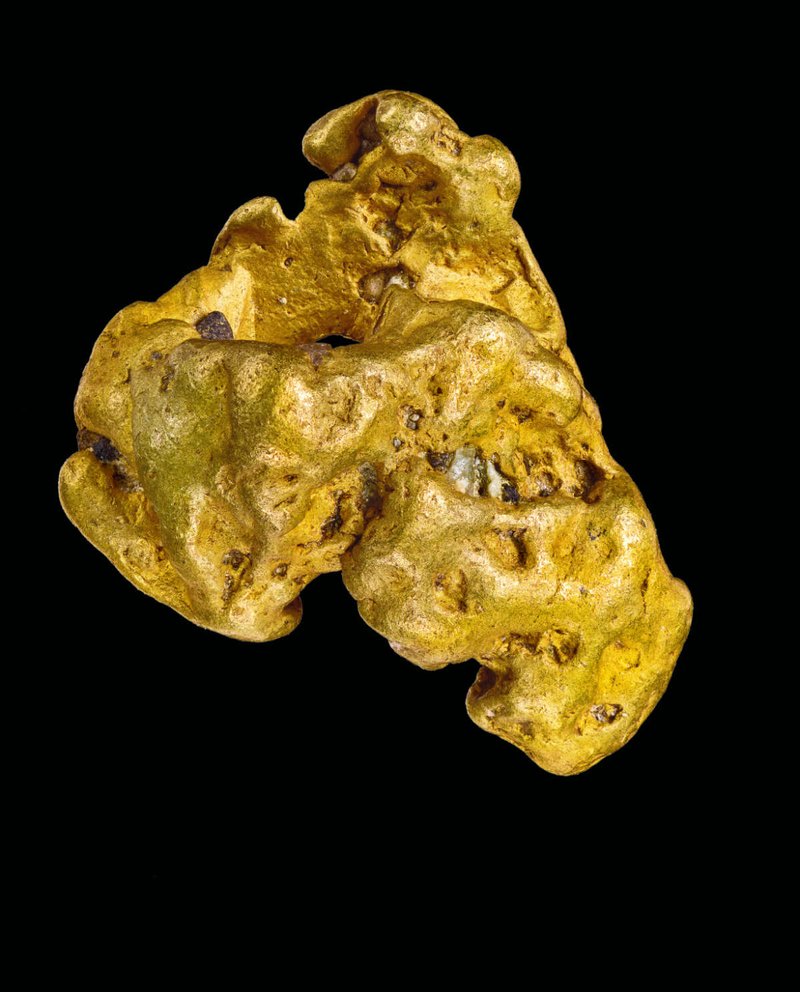
Gold nugget from the River Carnon in Cornwall (Great Britain). The nugget contains several black inclusions of cassiterite. The composition of the gold from this river best matches the gold from the Sky Disc. © LDA, photo: J. Lipták.
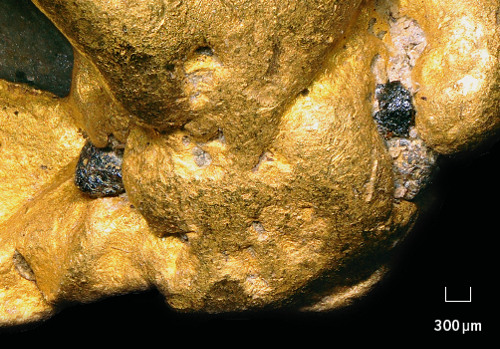
3D microscope image of the surface of a nugget from the River Carnon with typical inclusions of grains of cassiterite. When melting such gold nuggets, part of the tin merges into the gold, as is typical for the Cornish gold of the Sky Disc. © LDA, photo: J. Lipták.
